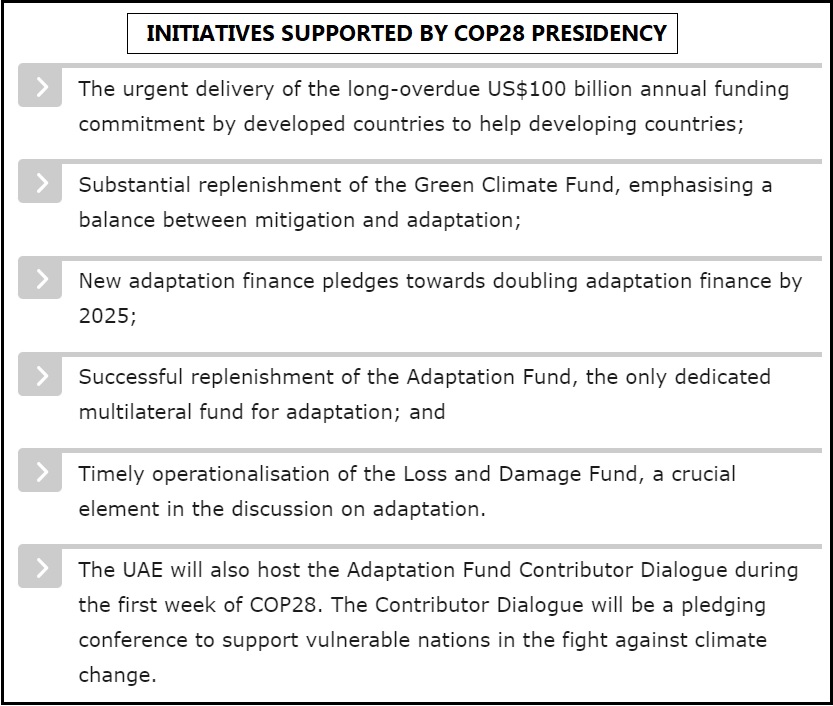During the 3rd Climate and Development Ministerial, Sultan bin Ahmed Al Jaber, COP28 President, has emphasized the need to address adaptation finance gaps and make climate finance more accessible to vulnerable nations.
|
Conventions |
About |
|
Aims to conserve biological diversity, use its components sustainably, and share the benefits of genetic resources fairly and equitably |
|
|
United Nations Framework Convention on Climate Change (UNFCCC) |
An international environmental treaty to combat dangerous human interference with the climate system, by stabilizing greenhouse gas concentrations in the atmosphere |
|
Stockholm Convention (2001) |
An international environmental treaty to eliminate or restrict the production and use of persistent organic pollutants |
|
UN Convention to Combat Desertification |
A convention to combat desertification and mitigate the effects of drought through national action programs. |
|
An international treaty to protect human health and environment from anthropogenic emissions and releases of mercury and its compounds |
|
|
Montreal protocol (1989)
|
An international treaty to phase out the production of ozone depleting substances. (GEF is not formally linked to this protocol, but supports its implementation in transitioning economies) |
In accordance with the principle of “CBDR”, developed countries have to provide financial resources to assist developing country Parties in implementing the objectives of the UNFCCC.

References